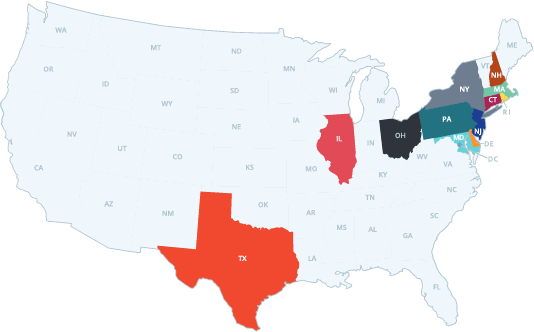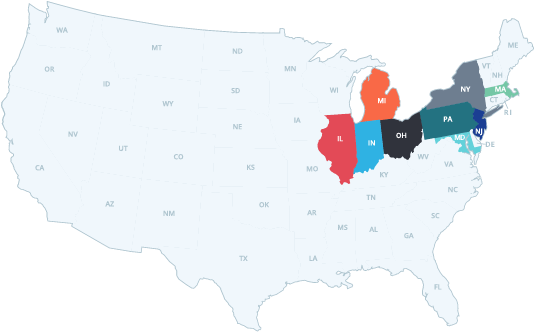Safety Tips for a Winter Weather Emergency: How to Prepare
Winter storm preparedness checklist
No matter where you live, it's likely that you'll face severe winter weather at some point in your life. Blizzards and ice storms create extreme and dangerous driving conditions, while heavy snowstorms accompanied by wind can knock down power lines, leaving you without heat or means of communication. Create peace of mind for your family during a harsh winter by preparing ahead of time and following these tips to be ready before, during and after a nasty storm.
Print out our winter weather preparedness checklist here.
What to Do Before a Snow Storm

Prepare Your Family
- Put together an emergency kit. You don't want to be left scrambling around for essential gear at the last minute when a storm is already on its way. Your home should be equipped with appropriate emergency supplies, including flashlights with extra batteries, battery-operated radio, extra blankets, first-aid kit, fire extinguisher that has been properly serviced, and medical supplies — including at least one week of prescription medications.Be sure to replenish your kit each winter with season-specific gear.
- Stock up on enough non-perishable food and water for each family member for at least three days. Do this ahead of time so you don't get stuck fighting crowds at the grocery store for provisions at the last minute.
- Make a communication plan. A disaster could hit at any time, and you may not be together with your family at the critical moment. Make sure you discuss how you'll communicate in advance to increase the odds of staying in touch with your loved ones. All family members should have emergency telephone numbers stored in their phones, including their parents' work numbers. Parents should also have the numbers for their children's schools saved in their phones.
- Pick two regrouping locations. Every family should have an outdoor location on their property where they agree to meet in the event of an emergency such as a fire or gas leak, so you can regroup quickly and make sure all members are accounted for. You should also set a second location off your actual property to meet up when family members are not home to begin with, such as during the school or work day.
- Practice your evacuation plan. It's important to stage a dry run of a fire or other emergency that would require you to vacate your home in a hurry. All family members should be able to identify basic escape principles and know where the exit points are. If you've already run through the procedures a time or two, you increase your chance of a successful evacuation in the event an emergency does hit.
- Learn first aid. Family members should learn basic first aid and CPR in case of a medical emergency. You could save a loved one's life, especially if emergency response vehicles are overwhelmed with calls during a disaster or are blocked from reaching your home.
Prepare Your Home
- Winterize your home. This includes insulating walls and attics, caulking and weather stripping doors and windows, and installing storm windows or covering windows with plastic.
- Clean chimneys and other heating equipment and make sure they are inspected each year. The middle of a storm is the last moment you want your heater to unexpectedly quit on you.
- Check on your fuel supplies. If you use oil, propane or wood to heat your home, make sure you have an ample supply to stay warm throughout an extended storm.
- Insulate pipes with insulation or newspapers and plastic. If a hard freeze is expected, allow faucets to drip a little to avoid solid freezing. Even a minimal trickle of water helps prevent pipes from freezing solid.
- Check smoke and carbon monoxide detectors. Make sure your smoke and carbon monoxide detectors are working. If the power goes out and you need to use candles, a backup generator, or a gas or wood-burning fireplace, you will rely on your detectors to sense any odorless gas or smoke.
- Maintain your property to reduce risk factors such as tree limbs close to your house that could break off in high winds or heavy snows. If a tree does fall in your yard, make sure you know what to do. In the event of extreme weather, a winterized yard can go a long way.
- Keep extra water in case of an outage. If an outage is expected, fill up your tub and spare containers with water. You'll be happy to have it for drinking, cleaning and flushing the toilet if you have to endure an extended stretch when the faucets don't work.
Prepare Your Car
- Fill up your gas tank to prevent freezing, and to ensure you have fuel if you need to engage in emergency travel.
- Winterize your vehicle. This includes making sure your antifreeze levels are good, verifying that your battery and ignition system are in top condition, and replacing fuel and air filters. Check for the level and weight of your oil as heavier oils congeal more at low temperatures and don't lubricate as well. Also, be sure your windshield wipers are working well and install good winter tires with adequate tread for winter weather. In some extreme cases of icy and snowy terrain, you'll need to use chains or snow tires with studs.
- Practice safe driving. Winter weather commutes can be dangerous if you are not prepared for the drive.
- Pack an emergency kit in the trunk. This kit should contain items like booster cables in case your battery dies, sand or cat litter to place in the snow for traction, energy bars for protein, warm clothes and blankets, extra batteries for your smartphone, a shovel to dig out snow around your tires, and a flashlight for when it gets dark.
- Have your car serviced by a certified mechanic before any cold weather trip to ensure all fluid levels are appropriate, the battery is strong, the tires have been rotated or replaced with all-season/all-terrain options, and the brakes and defrost system work appropriately.
What to Do During a Snow Storm
In Case of a Winter Emergency at Home
- Know your lingo. There are different terms that convey varying degrees of severity of incoming weather:
- Winter Weather Advisory: The National Weather Service will issue an advisory when significant amounts of precipitation are on their way, but not expected in sufficient amounts to cause major hazards.
- Winter Storm Watch: This means that severe weather conditions that can jeopardize life, limb and property are possible, but not assured, over the ensuing 48 hours.
- Winter Storm Warning: A warning indicates that a major storm carrying substantial amounts of precipitation is either on its way or already affecting your area and is serious enough to jeopardize lives or cause considerable property damage.
- Prepare for specific conditions. A winter storm can mean any combination of snow, sleet, freezing rain, ice or wind, but there are other types of weather that warrant more specific notices. The exact amount of nasty weather necessary to warrant a Weather Service label can vary by geographic location.
- Blizzard Warning: A blizzard warning indicates heavy wind and snowfall that is likely to reduce visibility for extended periods of time.
- Ice Storm Warning: This means that a significant amount of ice will accumulate on the ground. Be extra careful on the roads and sidewalks during and following an ice storm.
- Freeze Watch or Warning: Freeze notifications are given when it is possible or likely that freezing temperatures will endure for a day or longer.
- Stay connected to a radio or TV for alerts from the NOAA and for warnings from the National Weather Service for all hazardous conditions. Download free smart phone apps such as those available from FEMA or the American Red Cross. They provide information about finding shelters and how to receive first aid if you need it.
- Bring pets and other animals inside where they are sheltered from extreme weather and have access to fresh water.
- Keep your phones fully charged and have a backup battery ready in case of a power outage.
- Know the signs of frostbite and hypothermia so you can provide treatment in case anyone gets stuck in the cold for an extended period of time.
What if the Power Goes Out?
- Report the outage to your utility company.
- Stay warm. Dress in your cold weather clothes and use blankets indoors. If you can do so safely, use alternate power sources or a backup generator to heat your home. Make sure that the area where you use a grill, backup generator or other source is well-ventilated.
- If your pipes do freeze, try to warm them using hot water and rags, or with a hair dryer. Do not use a torch, as that creates a serious fire hazard.
- Avoid downed power lines and call your local utility to report any in your area.
- Preserve the food in your refrigerator and freezer by moving it to a cooler area like the basement to reduce chance of spoilage.
- Monitor the radio for emergency information and updates.
In Case of a Winter Emergency on the Road
- Be a responsible driver. Travel at a speed appropriate for the road and weather conditions. Also, keep your gas tank at least half-full to prevent freezing.
- Try to stay on main roads and avoid back road shortcuts as these are less likely to be well-lit or plowed.
- Use sand or cat litter from your emergency kit to melt ice or gain more traction if you get stuck.
- Clear snow from the top of your car, headlights and windows. Do not pour water on windows to get rid of snow or ice. Even lukewarm water can present a risk as it can freeze to the windshield or flow to the base and freeze near wiper blades.
- Keep emergency contacts like your car insurance and emergency towing service handy.
- Stay in your car if you are driving when the storm hits, even if it's no longer safe to operate the vehicle, unless you are absolutely sure you can reach shelter on foot. You can run your car periodically to stay warm but don't keep the engine on too long, both to preserve fuel and limit your exposure to carbon monoxide.
What to Do After a Snow Storm
- Stay away from power lines and avoid driving on roads with fallen debris.
- Be cautious of ice that remains on surfaces when walking outside or driving.
- Throw out any food that may have spoiled during a power outage.
- When it's safe to venture outdoors, shovel the walkways around the house and use sand to improve traction to make it easier to come and go.
- Evaluate the condition of your house, keeping an eye out for storm damage, leaks, and other issues that require attention.
- Check on friends and neighbors, especially any that are elderly, disabled or live alone.
- Report any damage to your local utility and other services in your community.
- Stay alert for flooding potential once the snow and ice start to melt, and take appropriate precautions to secure your property.
- Restock your emergency kit so you're prepared in the event of another weather emergency.
 CANADA
CANADA USA
USA









